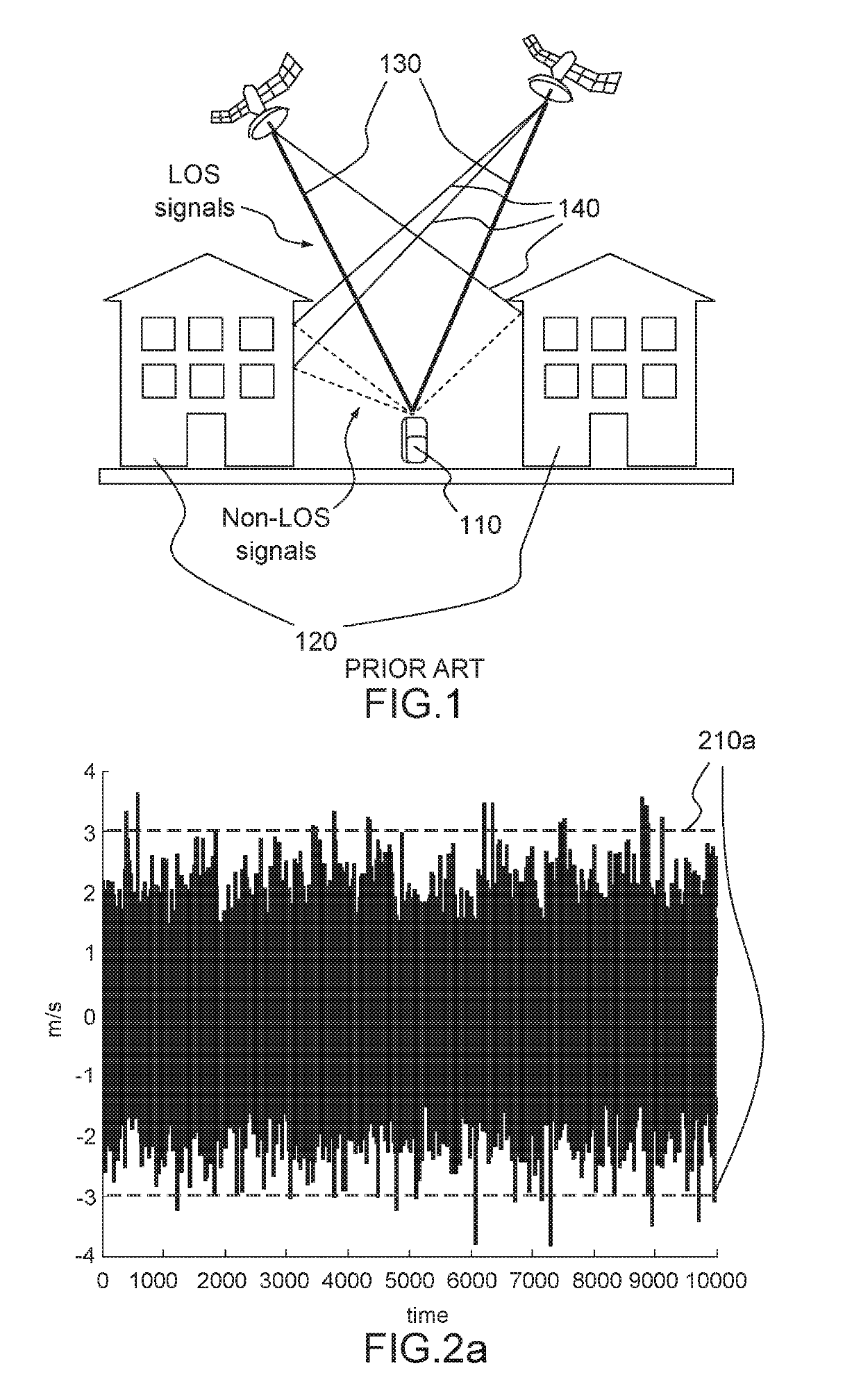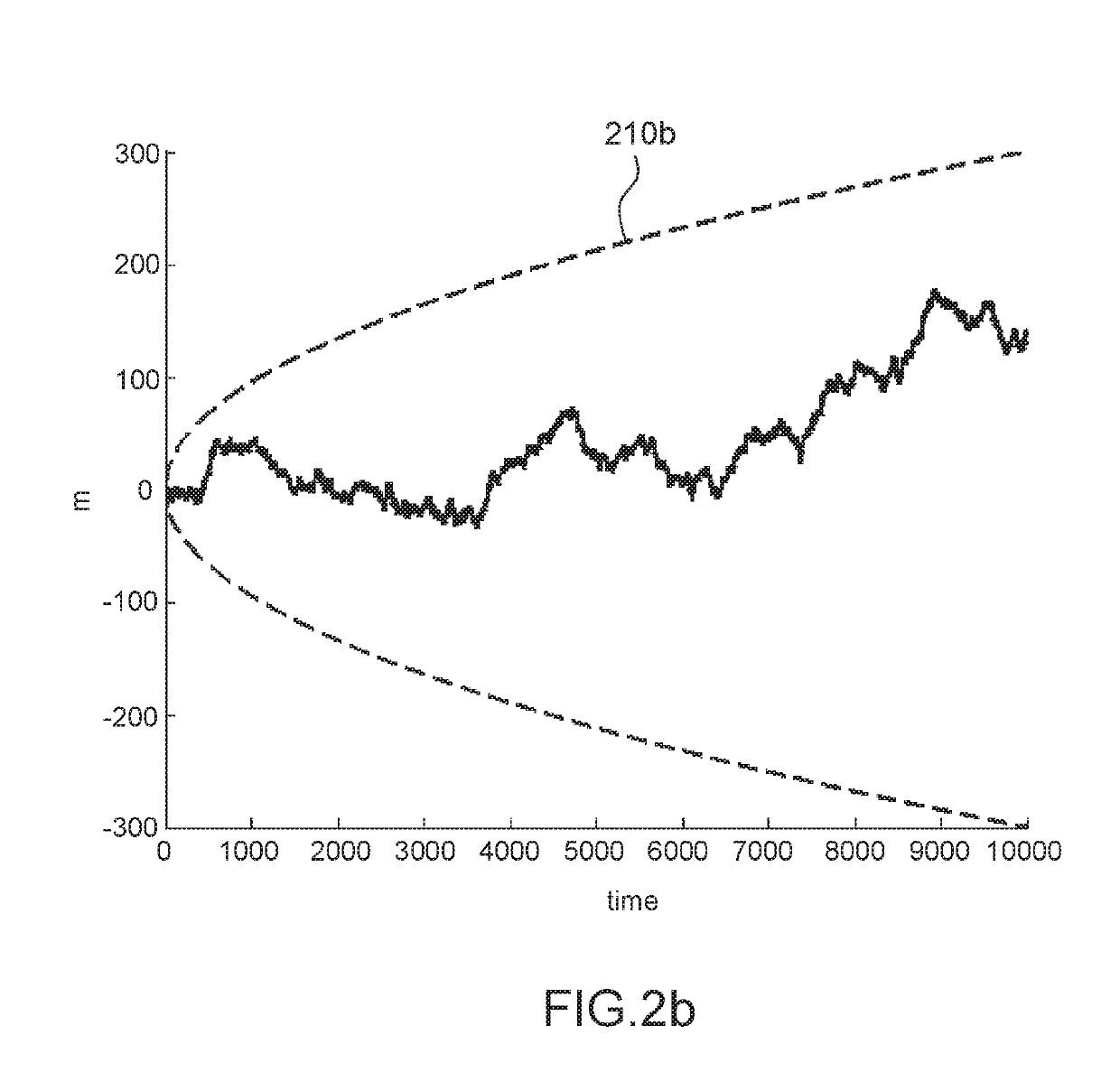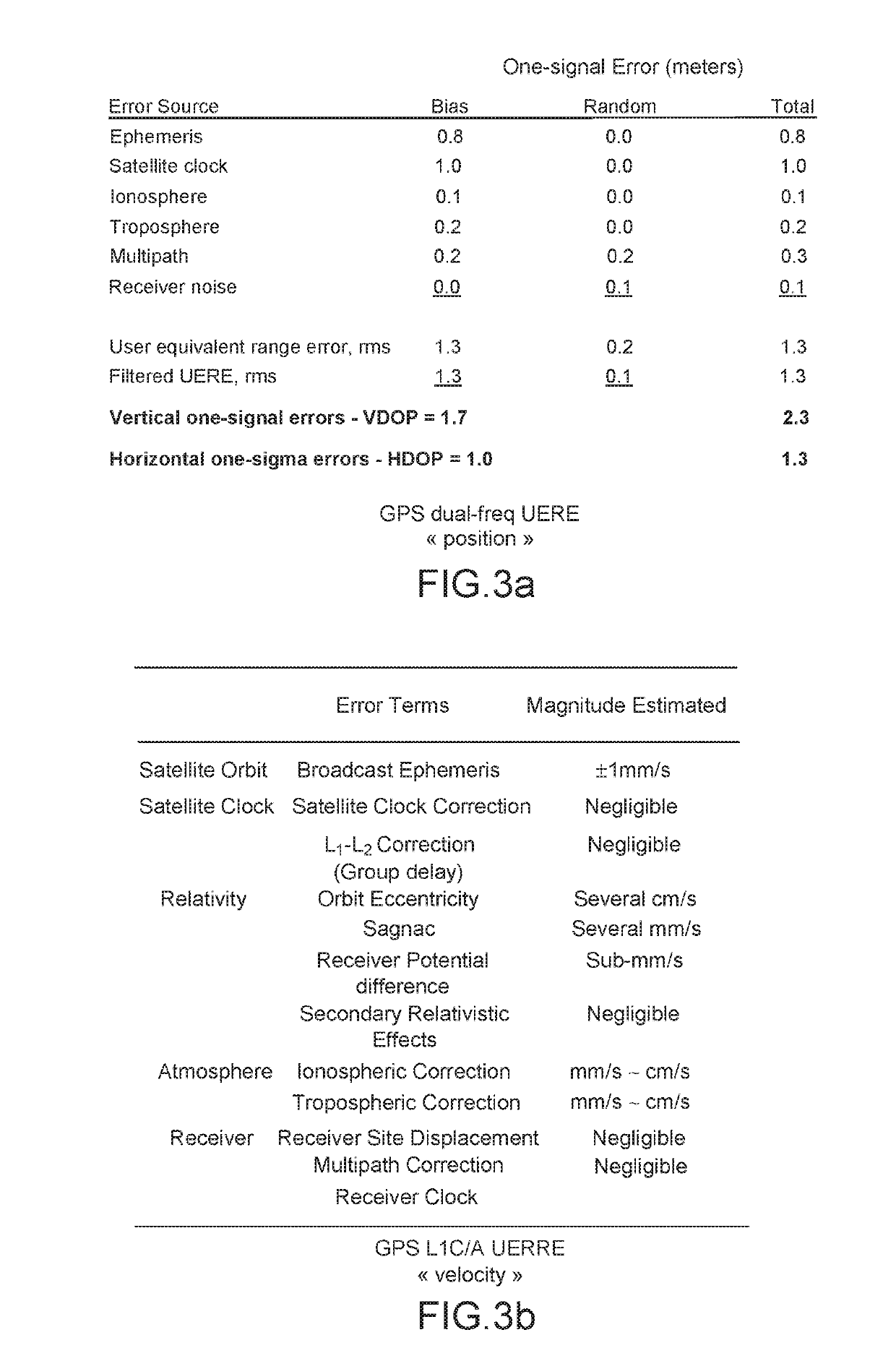Improved GNSS receiver using a combination of velocity integration and precise point positioning
- Summary
- Abstract
- Description
- Claims
- Application Information
AI Technical Summary
Benefits of technology
Problems solved by technology
Method used
Image
Examples
Embodiment Construction
[0047]FIG. 1 illustrates the multipath problem as viewed from a GNSS receiver of the prior art.
[0048]A receiver 110 is positioned between two buildings 120. Certain signals 130 reach the receiver in a direct line. Other signals 140 reach the receiver after having been reflected from the buildings. A standard receiver is not able to distinguish between direct signals 130 and reflected signals 140, thereby leading to a positioning error. Multipath errors at a given location of the receiver 110 will depend on the characteristics of the obstacles at the location (height, roughness of their surface, etc. . . . ) but also on the elevation of the satellites in view, and therefore on the time of the day, and on the meteorological conditions.
[0049]It is quite difficult to correct multipath errors, notably because they are location and time dependent and therefore require significant memory and / or processing power. Also, receivers which are configured or aided to cope easily with other types ...
PUM
 Login to View More
Login to View More Abstract
Description
Claims
Application Information
 Login to View More
Login to View More - R&D
- Intellectual Property
- Life Sciences
- Materials
- Tech Scout
- Unparalleled Data Quality
- Higher Quality Content
- 60% Fewer Hallucinations
Browse by: Latest US Patents, China's latest patents, Technical Efficacy Thesaurus, Application Domain, Technology Topic, Popular Technical Reports.
© 2025 PatSnap. All rights reserved.Legal|Privacy policy|Modern Slavery Act Transparency Statement|Sitemap|About US| Contact US: help@patsnap.com



